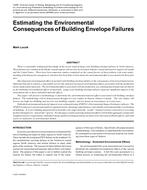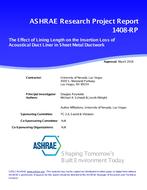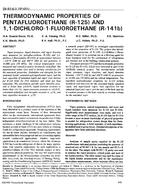This experimental study compares various methods of reducing the effects of solar radiation on outdoor air temperature measurements. It indicates that radiation effects can introduce significant measurement error, even with the use of shielding devices and aspiration, and outlines efforts that were taken to lessen the error caused by radiation. Two separate tests were conducted, one comparing naturally ventilated and fan-aspirated radiation shields, the other comparing seven identical fan-aspirated shields. Results from the first test showed that one of the naturally ventilated shields was generally more effective than a fan-aspirated unit – at some instances of high radiation giving daytime temperatures as much as 0.7 deg F (0.4 deg C) lower. Attaching foil-faced insulation to the cylinders of the fan-aspirated unit generally reversed the results, making the fan unit usually give the lowest temperatures by as much as 1.3 deg F (0.7 deg C). Results from the second test showed that the temperatures recorded using seven identical fan-aspirated shields differed by as much as 0.7 deg F (0.4 deg C) in morning and afternoon sun but consistently less than 0.2 deg F (0.1 deg C) during non-sun hours.
KEYWORDS: solar radiation, outdoor temperature, measuring, experiment, comparing, testing, shielding, fans, temperature, foils, daytime.
Citation: ASHRAE Transactions 1993, Vol.99, pt.1
Product Details
- Published:
- 1993
- Number of Pages:
- 10
- File Size:
- 1 file , 1 MB
- Product Code(s):
- D-17641


